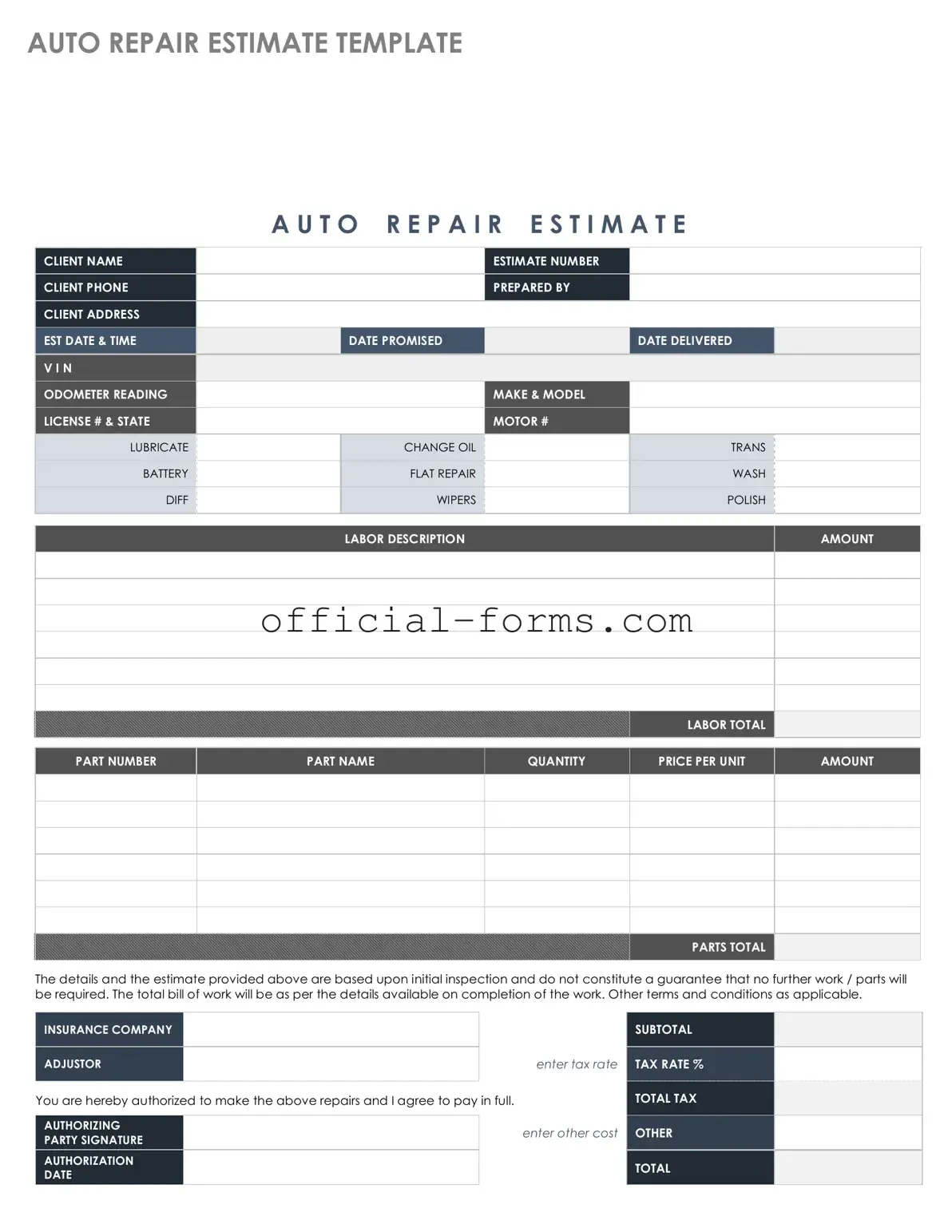Filling out an Auto Repair Estimate form can seem straightforward, but several common mistakes can lead to delays or misunderstandings. One frequent error is providing incomplete contact information. Without accurate details, such as a phone number or email address, the repair shop may struggle to reach out for clarifications or updates.
Another mistake involves neglecting to describe the vehicle's issues clearly. A vague description can result in an inaccurate estimate. For instance, stating "the car makes a noise" without specifying the type of noise or when it occurs can lead to confusion. Detailed descriptions help technicians diagnose problems more effectively.
People often forget to include the vehicle identification number (VIN). This number is crucial for identifying the specific model and year of the vehicle. Omitting it can lead to misestimations regarding parts and labor. Always double-check that the VIN is correct and included.
Additionally, some individuals overlook the importance of documenting previous repairs or maintenance. Noting any recent work done on the vehicle can provide valuable context. This history can influence the current repair needs and may affect the estimate provided.
Another common error is failing to specify the desired timeline for the repairs. If a customer needs their vehicle fixed by a certain date, it’s essential to communicate this upfront. Not doing so can lead to frustration if the repair shop cannot accommodate the timeline.
Misunderstanding the coverage of warranties or insurance can also create issues. People sometimes assume that all repairs will be covered, which may not be the case. Clarifying what is covered before submitting the estimate can prevent unexpected costs later.
Finally, not asking questions about the estimate can lead to miscommunication. If something is unclear, seeking clarification is important. Engaging with the repair shop ensures that all parties have the same understanding of the work to be performed and the associated costs.
